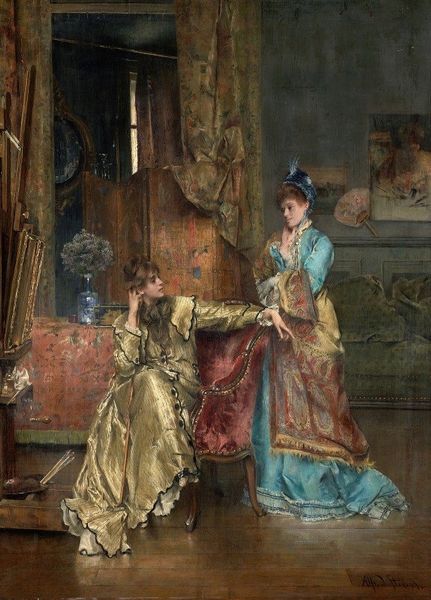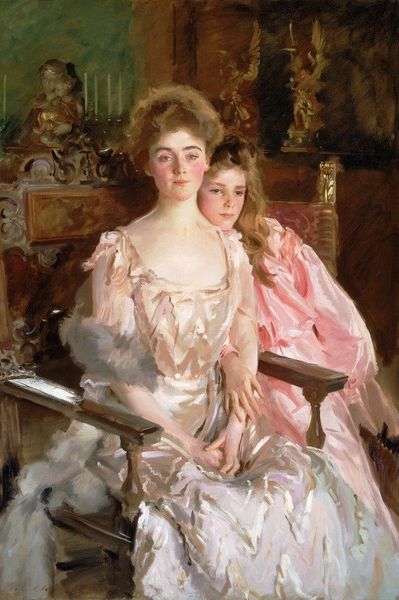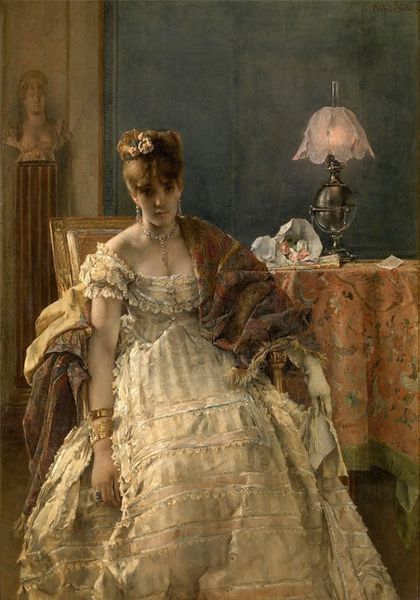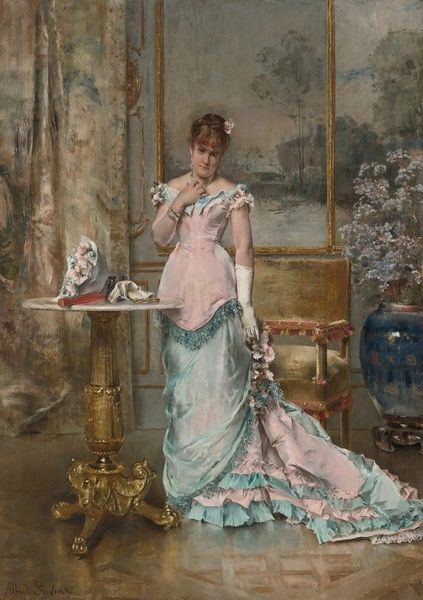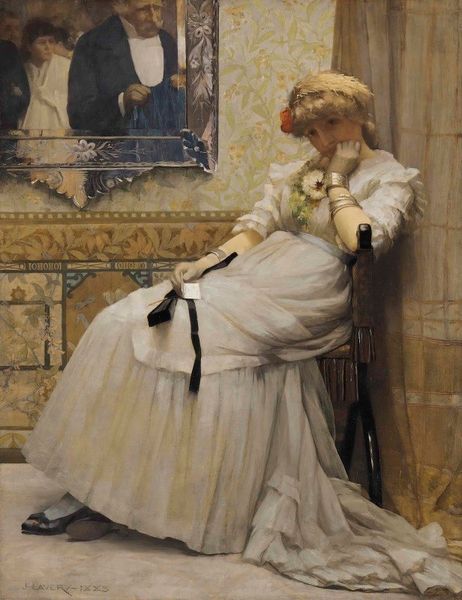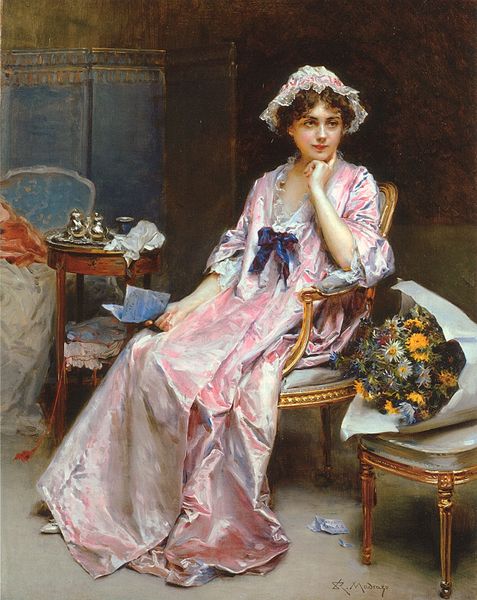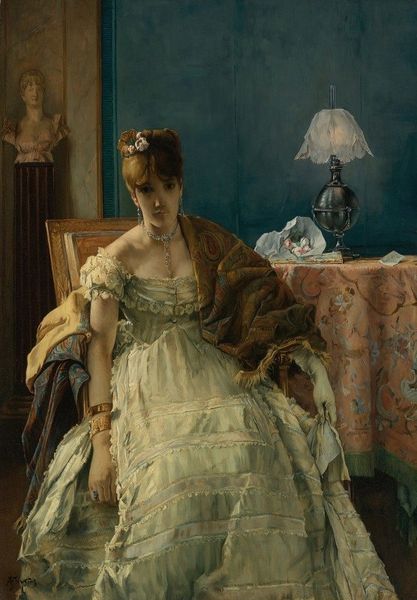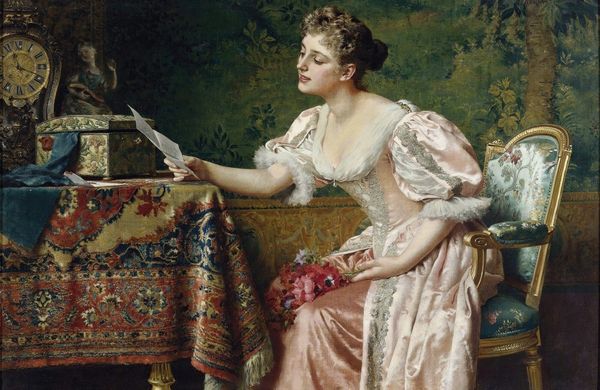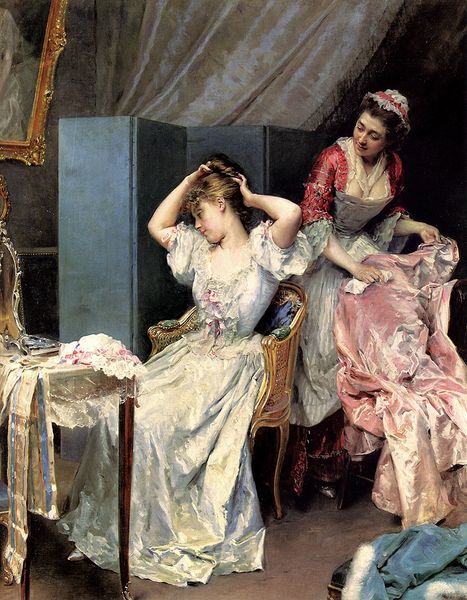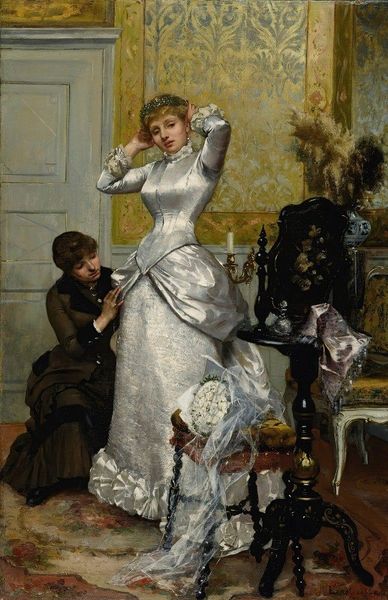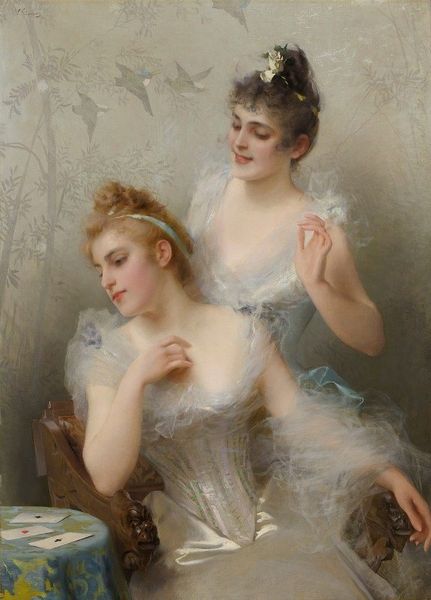
Copyright: Public Domain: Artvee
Curator: This is "After the Ball," an oil painting created by Alfred Stevens in 1874. Editor: It’s immediately striking, isn’t it? There's a sense of quiet melancholy clinging to these figures, accentuated by the contrast between the lavish dresses and the women's somber expressions. Curator: Stevens, known for his intimate scenes of elegant women, frequently imbued his works with what art historians refer to as "intimist" symbolism. The setting itself, with the dimly lit interior, suggests introspection. The single lamp, casting a warm light, acts as a beacon of fragile hope, or perhaps the last vestiges of a dissipating gaiety. Editor: The touch, the shared hands—I see a complicated sisterhood. Is the standing figure a representation of the emotional labor often shouldered by women? The support, yes, but also perhaps an awareness of shared, limited options in their gilded cage? The paisley shawl of the seated woman, it reads like an unraveled narrative in textile form. Curator: That's a compelling observation. Paisley, originally a symbol of life and fertility, often loses that immediate connotation when translated through Western eyes. The artist’s choice to highlight the patterns and folds suggests that material possessions can also carry cultural or personal narratives. Do you notice, too, how the gowns, with their intricate details, seem almost like costumes, hinting at constructed identities rather than authentic selves? Editor: Precisely! And consider the title "After the Ball." It invites us to deconstruct the performance of societal expectations. Were these women active participants in that masquerade, or were they simply performing roles dictated to them? Curator: Alfred Stevens crafted not just a picture of refined life, but also a visual contemplation on feminine identity and unspoken societal constraints. There is a lingering aura here; something hidden beneath the surface of beauty and tranquility. Editor: A beautiful tableau concealing complicated undercurrents. It's a poignant reminder of the complexities women face in negotiating social structures, both then and now. A valuable piece for critical reflection.
Comments
No comments
Be the first to comment and join the conversation on the ultimate creative platform.
